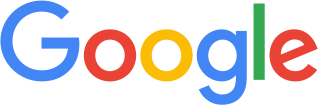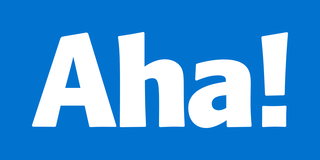History
3M and 15% time
The 15% project, an initiative established by corporation 3M. At the time of this program's implementation, the United States’ work force was composed of highly inflexible employment opportunities in rigid business structures. [4] [2] After WWII ended, 3M developed an ethos: Innovate or die, which provided enterprise for the company and inspired the launch of this program. This original project has widely successful outcomes, resulting in scientists developing and manufacturing products that remain utilized internationally, even decades later.[ citation needed ]
Google implementation
Since before its IPO in 2004 [5] the founders of Google have encouraged the 20% project system. Compared to its predecessor, a five-percent increase in the time dedicated to projects allows for further positive growth in the company's levels. Over the last twenty years, this project enabled the creation of key Google services such as Gmail. [6]
As recognition of the clear benefits of retaining such a scheme grew, schools have replicated this system for their students in the classroom environment. The production of such creatively stimulated, ungraded work allows for peers to experiment with ideas without fear of assessment and increases their involvement in their general studies. [7] Further, other small businesses are now using this system in their day-to-day functions, including software company Atlassian, as a safeguard to counter damp growth rates and a general lack of innovation.[ citation needed ]
In 2013, Google discontinued 20 percent time. [8]
This section has multiple issues. Please help to improve it or discuss these issues on the talk page . (Learn how and when to remove these template messages) |
The 20% Project is responsible for the development of many Google services. Founders Sergey Brin and Larry Page advised that workers “spend 20% of their time working on what they think will most benefit Google”. [9] Google's email service ‘Gmail’ was created by the developer Paul Buchheit on his 20% time. In his project "Caribou", Buchheit used his knowledge from university software experience to create the service. The freedom to use his time in such a way allowed him to ultimately develop a fundamental Google service. Buchheit's colleague, Susan Wojcicki, utilised her time to create their product AdSense.[ citation needed ] Finally, developer Krishna Bharat created Google News as an individual pursuit and hobby.
Other companies
Australian enterprise company Atlassian has been using the 20% project since 2008. [10] Co-founder Mike Cannon-Brookes stated that “innovation slows as the company grows”. [11] And as such the scheme was introduced to re-inspire innovation. The induction of the system was a six-month trial, granting $1 million to engineers and allowing them to work on private projects based on personal interests. [12] Part of this 20% time is their annual "Ship It’"day, where employees are challenged with a task to create any product and then ship this item within 24 hours. [13] Workers created products which ranged from refined beer to ‘Jira’ software updates.
American project management software company TargetProcess adopted the 20% project for their small company. The company was composed of 110 members when the initiative was introduced. Company founder Michael Dubakov identified a lack of innovation from his employees, with their daily routines occupied with monotonous work. Dubakov was inspired by the output derived from 20% projects in Google and 3M but was unsure about the limit on employee involvement. Despite driving the project at Google, only certain employees were granted this time – meaning most workers could not use this opportunity for innovation. Dubakov decided to allow all employees to pursue individual projects, to reduce boredom and inspire innovation. Initially the company introduced “Orange Fridays” in 2013, an allocated 4 hours of each Friday afternoon to attend workshops, learn about and develop new technology. From this, the company saw a rise in investment opportunities and company growth. [11] The company developed a culture to innovate, with no pressure applied to employees moving from their regular schedule to innovate and learn.
In 2016, TargetProcess introduced the Open Allocation Experiment. This initiative was an extension of “Orange Fridays” and was applied to a majority of employees. The goal was to provide a more comprehensible user experience and amend issues with the TargetProcess product. Involved members were granted the opportunity to manage their schedule and individually pursue new product design. This experiment highlighted positive growth in the company, observed from a 10-month review. [14] Dubakov implemented deadlines, ensuring each individual met their personal goals. As a result, members reported to have felt an increase in personal motivation. The main company detriment that arose from this experiment was decreased company unity. With each employee pursuing individual projects a lack of management led to the company embodying the different visions from all employees, affecting company alignment. This experiment was ceased after the founder believed the company was unprepared for this shift in work dynamic. [15] TargetProcess would focus on backlog creation, with training programs for product development operating in conjunction. Self-organisation was a key concern for their 20% project as not all employees could manage their projects whilst reaching regular work deadlines. Another issue upheld in this experiment was the reward scheme, granted when an individual initiated a new product or scheme. This undermined the work of those employees not involved in the experiment and led to an unbalance in motivation.




